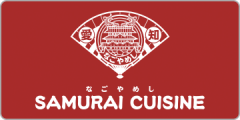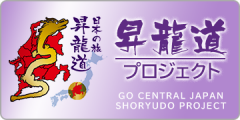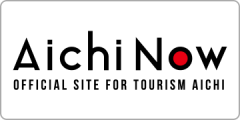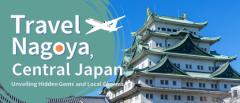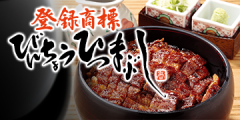- Home
- Sightseeing Spots
Sightseeing Spots
1 - 20 / 28 RESULTS
-
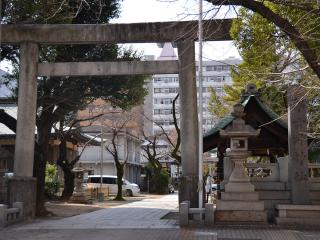
Sakae / Fushimi
Nagano Shrine
Nagono Shrine was originally enshrined in the current Marunouchi area of Naka Ward in the 11th year of the Enki era (911). It served as the guardian deity of the castle and was revered as the ancestral God of Nagoya. With the abolition of feudal domains, it was moved to its current location in the 9th year of the Meiji era. On July 15th and 16th, the shrine holds a grand festival during which portable shrines and festival floats parade through the streets. Nowadays, both Nagono Shrine and Toshogu Shrine are famous for cherry blossoms in the area. See More
Nagono Shrine was originally enshrined in the current Marunouchi area of Naka Ward in the 11th year of the Enki era (911). It ser…See More
-
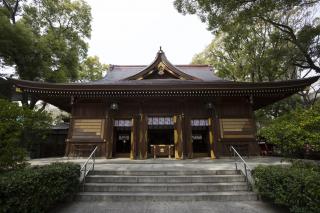
Sakae / Fushimi
Wakamiya Hachimansha Shrine
The enshrined deities of Wakamiya Hachimansha Shrine are Emperor Nintoku, Emperor Ojin and Takeuchinosukune, a legendary person who served in Japan's first imperial government. Tokugawa Ieyasu designated the shrine to be the main tutelary deity of Nagoya in 1610. In addition to its regular festivals, the Wakamiya Festival held on May 15-16 every year; the harikuyo festival, a memorial service for dull and broken needles; and other festivals and events are held. See More
The enshrined deities of Wakamiya Hachimansha Shrine are Emperor Nintoku, Emperor Ojin and Takeuchinosukune, a legendary person w…See More
-
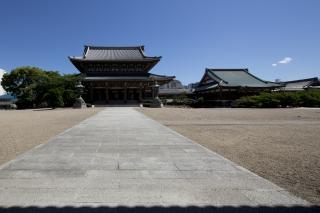
Sakae / Fushimi
Hinshu Otaniha Nagoya Temple (East Branch)
Located in the city center, there is a central dojo or traininghall for followers of Shin Buddhism in the Owari region. It is a branch temple of the Shinshu Otani-ha (East branch). Established in 1690 on the former site of the residence of Oda Nobuhide, Known as "Gobosan"' In recent times, it is also referred to as "Higashi Betsuin"(or East Branch) which is the name of a subway station on the Nagoya Municipal Subway line. On the 12th of each month, there are events called 'Ennichi Ichinyusan' and 'Onjiki Market,' and on the 8th, 18th, and 28th, the "East Branch Temple Morning Market Lifestyle" is held, attracting a large number of visitors." See More
Located in the city center, there is a central dojo or traininghall for followers of Shin Buddhism in the Owari region. It is a…See More
-
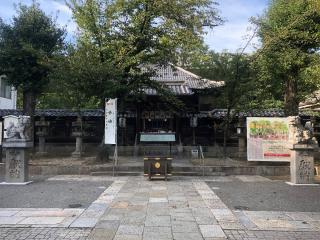
Sakae / Fushimi
Nagoyatoshogu
Nagoya Toshogu Shrine was established by Tokugawa Yoshinao, the founder of the Nagoya Domain, in the 5th year of the Gen'wa era (1619), enshrining Tokugawa Ieyasu, the founding shogun of the Tokugawa Shogunate, within Nagoya Castle. In the 8th year of the Meiji era (1875), the shrine was relocated to its current location. However, it was tragically destroyed by the bombings during World War II in the 20th year of the Showa era (1945). The current main hall of the shrine is a reconstruction, originally being the memorial hall (otamaya) of Tadayori, the lawful wife of Yoshinao. This structure was moved from Wanchosan Temple to Kenchuji Temple in the 3rd year of the Taisho era (1914) and then transferred to the present site in the 29th year of the Showa era (1954). It is now designated as an Important Cultural Property of Aichi Prefecture. Before the war, the Toshogu Festival used to feat… See More
Nagoya Toshogu Shrine was established by Tokugawa Yoshinao, the founder of the Nagoya Domain, in the 5th year of the Gen'wa era (…See More
-
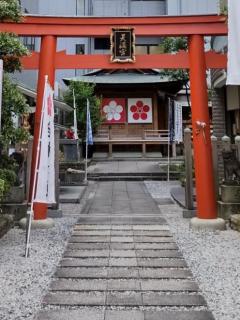
Sakae / Fushimi
Sakura Tenjinsha
One of the three major Tenjin shrines in Nagoya. It is said to have originated when Oda Nobuhide, the father of Oda Nobunaga, enshrined a wooden statue of Sugawara no Michizane that was transferred from Kitano Tenmangu Shrine. He placed it in a shrine at the Nakano Castle. This area was known for its cherry blossoms, and as a result, the shrine came to be called Sakura Tenmangu or Sakura Tenjin. See More
One of the three major Tenjin shrines in Nagoya. It is said to have originated when Oda Nobuhide, the father of Oda Nobunaga, ens…See More
-
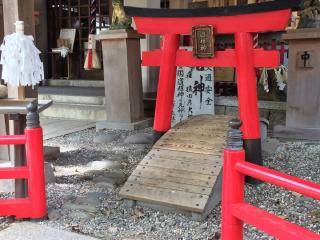
Osu / Kanayama
Susaki Shrine
This shrine is also known as "Hiroi Tenno" or "Ushitora Tenno," and during the Edo period, the Tenno Festival in Susaki was one of the two major festivals alongside the Tokugawa Shrine Festival. The annual festival takes place on July 13th and 14th, with a lantern festival held on the third Saturday of July and the following day. Additionally, this shrine is dedicated to a deity of matchmaking and relationships. See More
This shrine is also known as "Hiroi Tenno" or "Ushitora Tenno," and during the Edo period, the Tenno Festival in Susaki was one o…See More
-
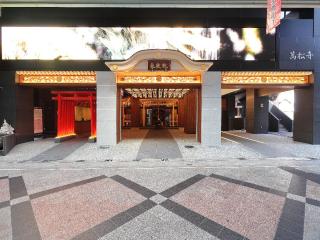
Osu / Kanayama
Banshoji
Banshoji Temple was established to pray for the repose of the soul of Oda Nobuhide (the father of the noted warlord, Oda Nobunaga). The temple was relocated to Osu when Nagoya Castle was built in 1610. Two karakuri mechanical dolls are exhibited: one expresses the scene of Nobunaga throwing incense at his father's funeral, and the other expresses the scene of Nobunaga performing a dance, "Kouwakamai", before going into the battle of Okehazama. See More
Banshoji Temple was established to pray for the repose of the soul of Oda Nobuhide (the father of the noted warlord, Oda Nobunaga…See More
-
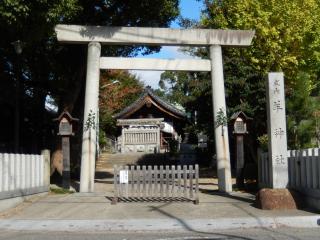
Northern Area
Hitsuji Shrine
The name of the shrine, Hitsuji Jinja is derived from a historical connection to a person called Hitsuji Taif), who was the lord of the Hitsuji clan. According to the inscriptions on the "Tago-hi" monument in Yoshii Town, Tano District, Gunma Prefecture (now part of Takasaki City, Yoshii Town), Hitsuji Taifu used to stop at a residence in this area (currently located in Nagoya City, Kita Ward, Tsuji-cho) during his journey to the capital in Nara. The people of this land wished for peaceful living, and thus, Hitsuji Taifu enshrined the deity of fire, leading to the shrine being called Hitsuji Jinja - the shrine where Hitsuji Taifu prayed for tranquility in people's hearts. The location of Tsuji-cho, where the shrine is situated, is described in the historical document of Owari Province as "Now, the village is called Tsuji, but it used to be known as 'Hinotsuji,' referring to its ass… See More
The name of the shrine, Hitsuji Jinja is derived from a historical connection to a person called Hitsuji Taif), who was the lor…See More
-
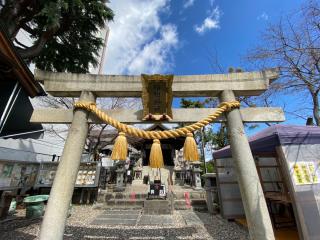
Northern Area
Seimei Shrine
A shrine dedicated to Abe no Seimei, an onmyoji (a practitioner of Japanese esoteric cosmology) from the Heian period. According to tradition, Abe no Seimei once resided in a hermitage in this vicinity. In the past, the area was abundant with marshes and was plagued by "mamushi" (venomous snakes), but it is said that Abe no Seimei performed prayers to confront these challenges, leading to the construction of this shrine in this location. Even today, the shrine continues to attract believers from all over the country as a place of protection against evil spirits and calamities. See More
A shrine dedicated to Abe no Seimei, an onmyoji (a practitioner of Japanese esoteric cosmology) from the Heian period. According …See More
-
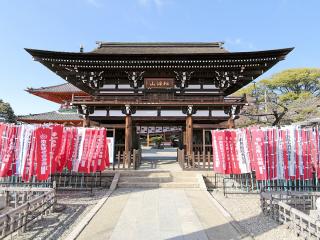
Northern Area
Ryusenji
Ryusenji Temple is a noted temple called the inner shrine of Atsuta Jingu and has the name of Shoutouzan. Denkyo-daishi (a great teacher of Buddhism) is said to be the founder of this temple. Niomon (Deva Gate) and a wooden statue of Jizobosatsu (the guardian deity of travelers and children) are designated as important cultural properties. In addition, the temple houses several hundreds of Buddhist statues including Batokannon (an image of Kannon which has a human body with the head of a horse) carved by Enku. Shops dealing in hobbyhorses operate on Setsubun (February 3). See More
Ryusenji Temple is a noted temple called the inner shrine of Atsuta Jingu and has the name of Shoutouzan. Denkyo-daishi (a great …See More
-
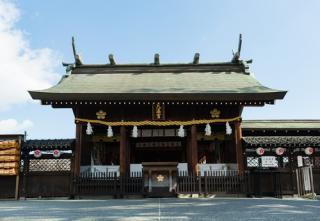
Northern Area
Yamada Tenmagu Shrine
In 1672, Tokugawa Ietsuna, the 4th shogun, encouraged education and learning. The lord of Owari domain, Tokugawa Mitsutomo, valued education and decided to enshrine Sugawara no Michizane's divine spirit in Yamada, now part of Aichi Prefecture. Yamada Tenmangu Shrine became a guardian deity protecting people from misfortunes and bringing blessings. It was located in the inauspicious direction of Nagoya Castle, making it highly revered. See More
In 1672, Tokugawa Ietsuna, the 4th shogun, encouraged education and learning. The lord of Owari domain, Tokugawa Mitsutomo, value…See More
-
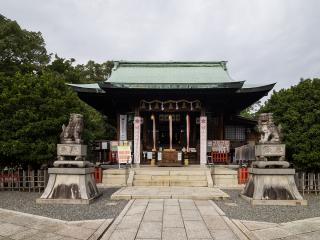
Eastern Area
Shiroyama Hachiman Shrine
In the entire Joyama Forest area, there used to be a castle called Suemori Castle, which was built by Oda Nobuhide. After Nobuhide's passing, his son Nobuyuki took over, but he was defeated by his older brother Nobunaga, leading to the castle's abandonment in just about ten years. On the site of this castle, the Joyama Hachimangū Shrine was established. The shrine attracts many visitors during events such as the first shrine visit of the New Year, the summer ritual of passing through the ring of sedge, and the autumn visit of three and five-year-old children for blessings. See More
In the entire Joyama Forest area, there used to be a castle called Suemori Castle, which was built by Oda Nobuhide. After Nobuhid…See More
-
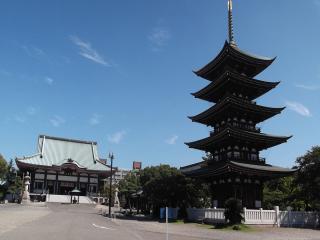
Eastern Area
Nittaiji (Kakuozan)
Nittaiji Temple was established in 1904 to enshrine Buddha's ashes and glit bronze received from the king of Thailand in 1900. This is the only non-sectarian Buddhist temple that every sect of Buddhism manages in order. In the temple site, there are a Gandhara style tower, a Hoanto, where the skeletal remains are maintained, a garden called Hassoen, and a tea ceremony room, Soketsuan. The five-story pagoda was built in April 1997. A street fair is held on the 21st day of the month. See More
Nittaiji Temple was established in 1904 to enshrine Buddha's ashes and glit bronze received from the king of Thailand in 1900. Th…See More
-
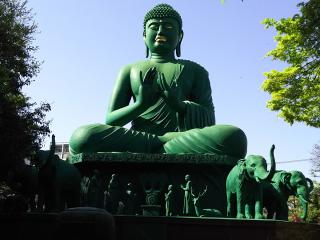
Eastern Area
Toganji
It is a temple of Soto sect of Buddhism. Oda Nobuyuki, the 3rd son of Oda Nobuhide (the father of the famous warlord, Oda Nobunaga) established this temple to pray for the repose of his father's soul. In its site, gorinto (a gravestone composed of five pieces piled one upon another) is built. Today, Toganji is widely known as the temple of Benzaiten (a Goddess of eloquence, music and art) and show-business personalities visit and pray for a better performance. This temple possesses several temple treasures in the motif of men and women united in conjugal acts including the so-called Sleeping Benzaiten. A 10-meter high statue, the Great Buddha of Nagoya, was erected in 1987. See More
It is a temple of Soto sect of Buddhism. Oda Nobuyuki, the 3rd son of Oda Nobuhide (the father of the famous warlord, Oda Nobunag…See More
-
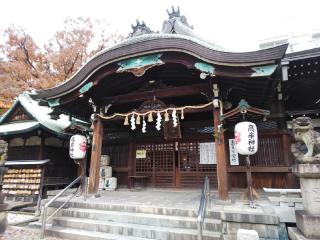
Eastern Area
Takamu Shrine
The pure spring water that springs forth within the precincts of Takamu Shrine is known as "Koi no Mizu" or "Love Water." It's said that drinking this water can bring about romantic relationships or even longevity. The purity of this water is guaranteed. This water maintains a consistent temperature throughout the year and is now one of the few remaining wells within the city. Takamu Shrine, the place of origin for the name "Furui no Sato" (Ancient Well Village), is an ancient shrine mentioned in the Engishiki (927 AD, mid-Heian period) and is classified as a Shikinaisha (Shinto shrine listed in historical records). The shrine enshrines the Deity of Bonds and Hachiman-sama. See More
The pure spring water that springs forth within the precincts of Takamu Shrine is known as "Koi no Mizu" or "Love Water." It's sa…See More
-
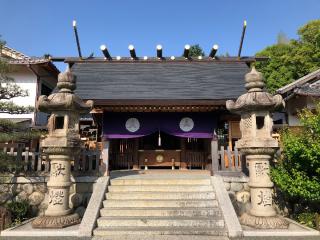
Eastern Area
Shiogama Shrine
Divine spirit was received from Shiogama Shrine in Miyagi Prefecture and enshrined. The enshrined deity is Shiozuchi Oji no Kami (Salt Soil Old Man Deity), who is believed to govern the tides and sea routes. Given that childbirth is related to the ebb and flow of tides, the deity is deeply revered as a guardian of safe childbirth. It's also said to be a guiding deity who imparted knowledge of salt-making techniques, and is highly venerated as a guardian of the safe growth of children and protection from pests. See More
Divine spirit was received from Shiogama Shrine in Miyagi Prefecture and enshrined. The enshrined deity is Shiozuchi Oji no Kami …See More
-
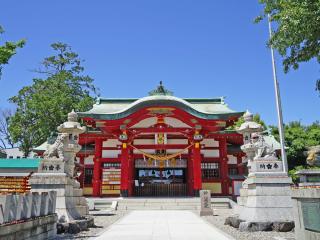
Eastern Area
Ueno Tenmangu Shrine
This is a shrine dedicated to Sugawara no Michizane, known as the God of learning. It is said to have been founded by Abe no Seimei during the Heian period. We offer various prayers and doll dedications without the need for reservations, so please feel free to visit. See More
This is a shrine dedicated to Sugawara no Michizane, known as the God of learning. It is said to have been founded by Abe no Seim…See More
-
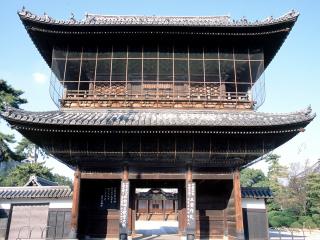
Eastern Area
Kenchuji Temple
Kenchuji is a temple belonging to the Jodoshu sect of Buddism and was established by the 2nd lord of Owari-han, Tokugawa Mitsutomo, in 1651 to pray for the soul of his late father, Yoshinao. Since its establishment, this temple has been the family temple of the Owari Tokugawa Family. There is a Gongen style mausoleum which is registered as prefectural cultural property at the back of the main building and ancestral memorial tablets of successive lords are enshrined in it. The temple's gate which was built in 1652 is the tower gate of sangen-ikko style (a 3x2-bay gate). See More
Kenchuji is a temple belonging to the Jodoshu sect of Buddism and was established by the 2nd lord of Owari-han, Tokugawa Mitsutom…See More
-
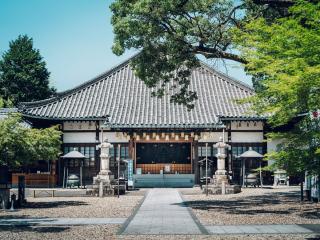
Eastern Area
Yagotosan Koshoji Temple
The impressive presence of the historic Owari Koya Yagotosan Koshoji Temple is a Shingon Sect temple in Nagoya City. It was built in 1688 by Buddhist priest Tenzui Ensho, who received Kukai's five-pronged vajra. It became known as a place of worship for the Owari Tokugawa family after the second lord of the clan, Tokugawa Mitsutomo, began devoting himself to the priest's teachings. Also called Owari Koya, it became a place of learning and training, as well as an object of worship for many people. See More
The impressive presence of the historic Owari Koya Yagotosan Koshoji Temple is a Shingon Sect temple in Nagoya City. It was bu…See More
-
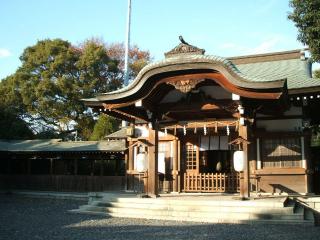
Southern Area
Hikami Anego Shrine
Hikami Shrine is one of the subsidiary shrines of Atsuta Shrine, affectionately referred to as "Ohikami-san" since ancient times. Located in the local area of Ogatakacho in Midori Ward, Nagoya City, it gathers profound reverence and faith from the people of this region. The Kusanagi-no-Tsurugi, one of the Three Sacred Treasures, is undoubtedly enshrined at Atsuta Shrine. However, before being enshrined at Atsuta Shrine, it was worshipped in the village of Hikami (later known as Hikami and Aratamaru). That is why it is regarded as the original shrine of Atsuta Shrine. See More
Hikami Shrine is one of the subsidiary shrines of Atsuta Shrine, affectionately referred to as "Ohikami-san" since ancient times.…See More







